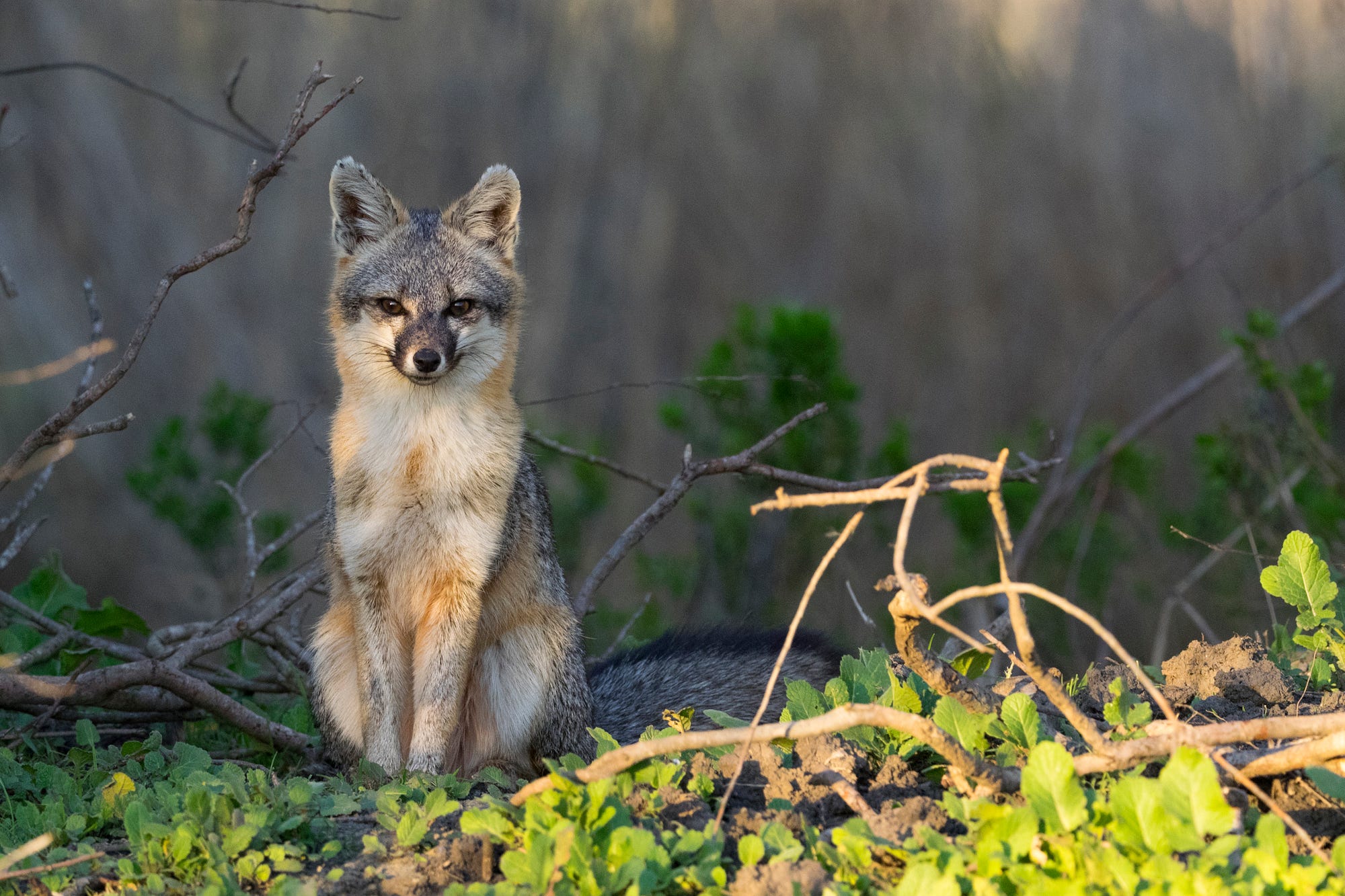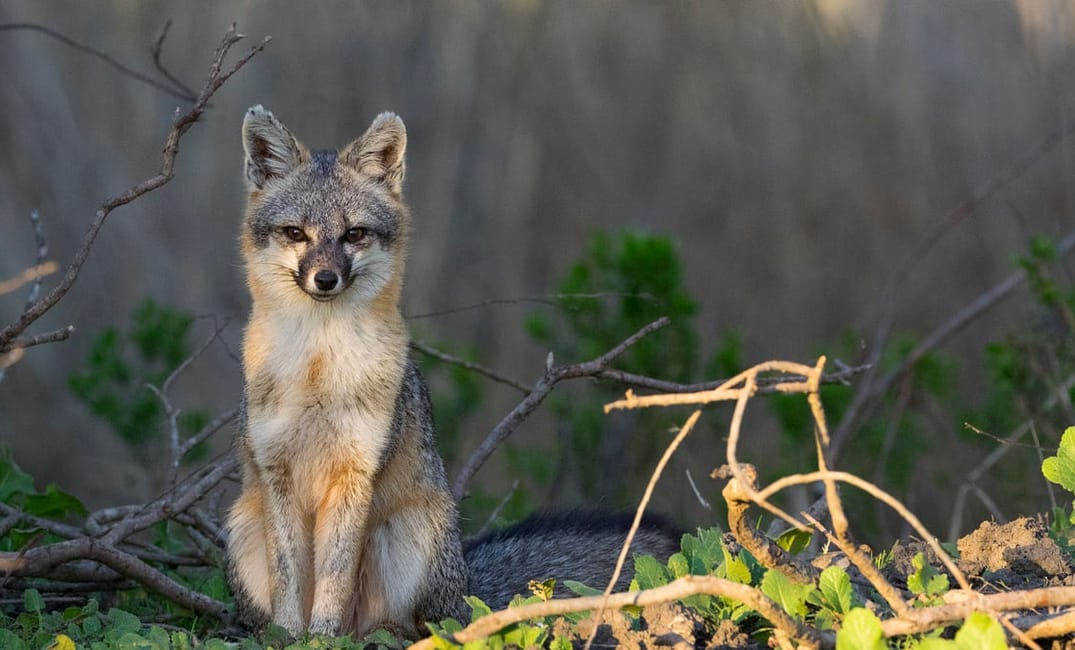
Bill Leikam isn’t a scientist by training; he studied philosophy and literature. But Bill, affectionately known as the “Fox Guy,” has always followed where curiosity leads him, and for the last decade, it led him to gray foxes. “I have always been this way, where if I get interested in something, I get really interested. I kind of get addicted to it. And that’s what happened with the foxes,” he said.
Bill’s decade-long citizen science project — one of the most extensive studies of the creatures ever conducted — began with simple observations of gray foxes near his home in Palo Alto in 2009. It branched into a sophisticated long-range study with serious policy implications not just for Bill’s furry research subjects but for the entire ecosystem the foxes represent.
By 2012, Leikam had attracted the interest of local wildlife-conservation photographer Greg Kerekez. Together they formed a nonprofit, the Urban Wildlife Research Project (UWRP), and expanded the operation to include citizen sightings, research assistants, and more, but Bill is still the chief fox-watcher. He works full-time at UWRP, where he is president and CEO.
“Gray foxes haven’t gotten much attention from the scientific community because they don’t cause trouble. They tend to stay in the bush and away from people, so they don’t really get studied.”
Bill and his team learned through their observations that the gray foxes of the South Bay are suffering from an all-too-common plight among semi-urban wildlife: they’re trapped. Fenced in by highways and development, the foxes can’t travel freely, which leads to a range of problems not just for them but for every other creature in the ecosystem. Since gray foxes are “cornerstone predators” — predators at the top of the food chain who hold it together — these problems include reduced gene pools, disease, and, eventually, collapse for the foxes and other wildlife.
Bill is advocating for a wildlife corridor—connected slices and sometimes bridges or tunnels of green space that allow animals to travel over highways and through developed areas. Wildlife corridors could benefit the health of the foxes and other Bay Area fauna.
When Bill noticed a family of foxes living near his home in 2009, he began to watch them and take notes. What began as a simple hobby exploded after Bill, encouraged by a friend, reached out to Ben Sacks, a scientist at UC Davis who is a fox expert. Sacks was thrilled that someone was studying the gray fox, specifically because very few people had before. “Gray foxes haven’t gotten much attention from the scientific community because they don’t cause trouble. They tend to stay in the bush and away from people, so they don’t really get studied,” Bill explained.
From Bill’s first glimpses of a few foxes to his diligent walks through wild spaces in Palo Alto and beyond, checking his trail cameras, he has studied generations of foxes. But at the end of 2016, Bill’s research took a devastating turn. “We experienced a massive die-out,” Bill explained. Bill watched as one by one, the entire group of animals he had studied for years grew sicker and sicker until they eventually died. “All of the foxes I had been monitoring—documenting their behavior—were wiped out by canine distemper,” he said.

Canine distemper is a quick-acting virus that attacks the nervous, respiratory, and gastrointestinal systems of dogs, foxes, and other creatures, including coyotes, raccoons, and other local fauna. The gray foxes weren’t just unlucky; the disease spread quickly through their population because, trapped as they were in their small territory, they had an unhealthily small gene pool, which made their immune systems weaker, leading to the die-out of the whole group.
For over two years, there was nothing on Bill’s trail cameras. But in January 2019, a new pair of foxes appeared in the territory. The new residents were exciting for Bill, and they also ramped up the urgency for the need to build a corridor to prevent another case of die-out, which disrupted the ecosystem of not just Palo Alto but the entire South Bay. After the die-out in 2016, the populations of other animals normally controlled by the foxes exploded in the area due to the absence of a balancing predator.
Animals that live in semi-urban environments have learned to adapt to the changes we have made around them, but they still need freedom of movement, just like humans.
Now that the pair of gray foxes is settled and the ecosystem is back in balance, Bill is keen to keep it that way. When the pair of foxes has pups, those pups will need to leave their parents’ range and seek their own territory, a process called “dispersal.” But without a corridor, they won’t be able to. Through extensive research and crowdsourced photos of sightings, Bill now thinks he knows exactly where they will need to go — if they can get there. “We are fairly confident we have the main corridor where the young foxes can disperse from their range to find their own territory,” he said.
The UWRP has mapped several routes that young foxes take through the South Bay and Silicon Valley, leading from the mountains all the way out to the bay. But unfortunately, along the route are highways, developments, and other dangers to the animals. If they had wildlife corridors, they could move freely. Wildlife corridors have benefits for people too — they can reduce collisions with animals, and increased open spaces improve air quality, lessen climate-change impacts, and more.
Bill’s foxes are the charismatic face of a massive problem in the Bay Area: habitat loss and fragmentation that is likely to only worsen with climate change as rising seas, wildfires, and other threats continue to plague our open spaces. Animals that live in semi-urban environments have learned to adapt to the changes we have made around them, but they still need freedom of movement, just like humans. What the foxes demonstrate is that preserving even small strips of natural space in order to allow wildlife to move freely is extremely important for the health and safety of our overall planet.







